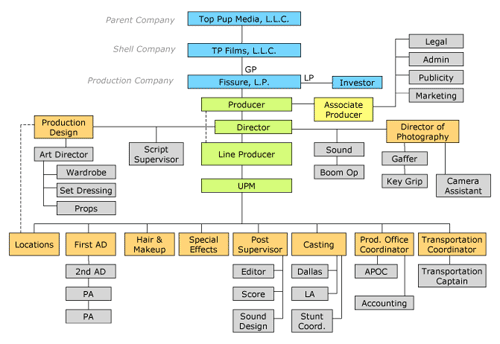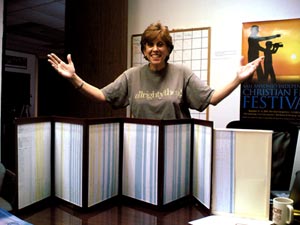After we decided to make a movie, we had to get a story. It was May of 2006.
I always wanted to write my own story. I love storytelling, and when I write, I always see things in my head. It’s see the surroundings, the people, the buildings. I hear the sounds, the music, the voices. I sense the smells, the emotions, the dangers.
So, I spent the next weeks studying story structure, reading Chris Vogler’s book on the Hero’s Journey. He outlined twelve stages of the Hero’s Journey:
• Ordinary World
• Call To Adventure
• Refusal Of The Call
• Meeting With The Mentor
• Crossing the First Threshold
• Tests, Allies, Enemies
• Approach
• Supreme Ordeal
• Reward
• The Road Back
• Resurrection
• Return With Elixir
With my math background, I was now eqiupped with a formula for success. After all, Star Wars followed this outline. Woo hoo! Let’s start writing.
Quickly, I realize that storyteling was considerably harder than just plugging in a formula. It actually required some amazing creativity. Yet, we pressed on.
We came up with a story about a guy who dreams of a car crash, but awakes in bed with his wife. It was only a dream. Later, throughout the day, things start to unravel. Things don’t seem real. Bizarre things start to happen. There is a lady there throughout the story to help him through his ordeal.
We thought it was a great start. It was only a couple of locations and a small cast, so the budget was low. So, we sent our writer friend, Mike, down that path. Yet, we only had about three months, because we wanted to start shooting on July 1.
But, July 1 came and went. The story development was going to take more time than we had planned for.
So, we decided to take another route–find a story that’s already developed.
We created a website page. Here, we described our goals, targets and movie objectives. Then, I posted the site to some writer’s forums.
The stories flooded in. Within in one week, we had received about 450 submissions. I specifically asked for a logline, synopsis (no scripts) and for the story to meet our criteria:
• Had to be a redeeming story.
• Had to be low budget.
• You need to be flexible with you story, so we can tweak as needed.
Note to writers: If someone wants a story with certain criteria, please make some effort to meet those criteria. We trashed hundreds of stories that were the most unredeeming stories. And we trashed many big budget stories. And, there were a few who demanded that we cast Bruce Willis or J Lo or Samuel Jackson. Ain’t going to happen! Let us produce the film.
So, we had our webiste and stories were coming in. We narrowed it down to about 30 stories. Narrowed it down to 30! It was crazy, but exciting. I enjoyed skimming through the stories and reading the creativity of others.
But, we found this one story–Fissure. It was really amazing. It was written with a low budget in mind. That was key. It had somewhat of a redeeming ending, but not quite what we were looking for. We wanted that commercially successful, walk-out-of-the-theater-crying, redeeming story. But, it was workable. And the writer was flexibile.
The story structure was truly amazing. The twists, the misdirection, flow, the intesity, the strategic plot points to move the story–all was quite amazing. Rick and I quickly selected it.
We then started working with Nick (our writer) on a new ending, one that would have the redeeming impact we were looking for. After a few revisions, he nailed it.
We had our story!
 I have just returned for AFM, the
I have just returned for AFM, the 

 In August, we hired a Line Producer (Nikki Nanos) to help us breakdown the script. That’s where you go through each scene and create a little strip with information about that scene. Then, you arrange them based on shooting schedules. This is tediious and time-consuming, especially since Nick and I (Russ) kept doing rewrites while she was breaking down the script. That’s like trying to hit a moving target. (I think Nikki was about ready to hit me, but I kept moving.)
In August, we hired a Line Producer (Nikki Nanos) to help us breakdown the script. That’s where you go through each scene and create a little strip with information about that scene. Then, you arrange them based on shooting schedules. This is tediious and time-consuming, especially since Nick and I (Russ) kept doing rewrites while she was breaking down the script. That’s like trying to hit a moving target. (I think Nikki was about ready to hit me, but I kept moving.)